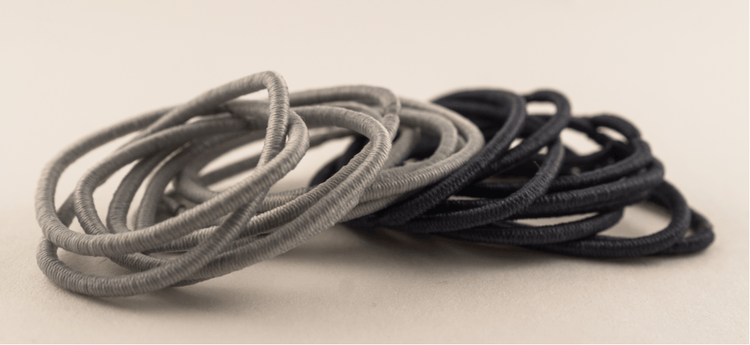
Hair Tie Ingestion in Cats
In a general sense, cats tend to be more picky and discriminate eaters than dogs, but there is one item where this rule doesn’t apply: hair ties. Some cats have a particular fascination with the hair tie, likely due to the rubbery texture and springy/bouncy nature. Most cats will only play with hair accessories, but some may consume them, making them an item that should not be left lying around due to the risk of ingestion.
Symptoms of Hair Tie Ingestion
Unless ingestion is witnessed, it may be difficult to know if your cat has eaten one of these items until they start showing signs of illness.
The most common clinical signs of hair tie ingestion include:
- Vomiting
- Lack of appetite
- Lethargy/hiding
If you see your cat eating a hair tie, they should be taken to an animal hospital immediately, as they can induce vomiting if necessary. This is the best case scenario, as a hair tie can be vomited up and no additional testing or treatment will be needed. Cats that present with clinical signs may need additional diagnostics to determine the cause.
Diagnostics
Additional diagnostics may include:
- Radiographs/X-rays. Hair ties can be seen on radiographs and have a very distinct look that helps with diagnosis.
- Ultrasound. This can help rule out other causes of vomiting/inappetence.
- Bloodwork. This evaluates the liver, kidneys, electrolytes, and cell counts, and can be used to rule out a systemic problem.
Treatment Measures
Depending on the location of the hair tie, different treatment recommendations may be made. Endoscopy is recommended if hair ties are in the stomach and not moving through the small intestines. This is a procedure where the cat is anesthetized and a videoscope is put in their mouth and advanced into the stomach. The endoscope can visualize the hair ties and facilitate removal. Endoscopy can also help to look for other underlying abnormalities in the stomach or esophagus.
If hair ties are in the small intestines, they can’t be readily removed with endoscopy and need to be removed through abdominal surgery. This involves the cat being anesthetized and having an incision along their abdomen. The surgeon evaluates all abdominal organs and isolates where the hair ties are located, making an incision over the region and removing the foreign material.
Approximately 20 hair ties surgically removed from a cat.
Cats that eat hair ties can become very ill, based on how many they ingest and how long their clinical signs are present. Cats that are vomiting and not eating for multiple days can get dehydrated, which compounds their illness. Those that receive medical care can have a full recovery from hair tie ingestion, as long as treatment is initiated as soon as clinical signs are presented.
Please have your cat evaluated by a veterinarian at any point if they are showing signs such as vomiting, inappetence, lethargy, or hiding. In addition, if you suspect that your cat could have eaten a hair tie, please have them seen by a veterinarian to pursue further testing and create a treatment plan.